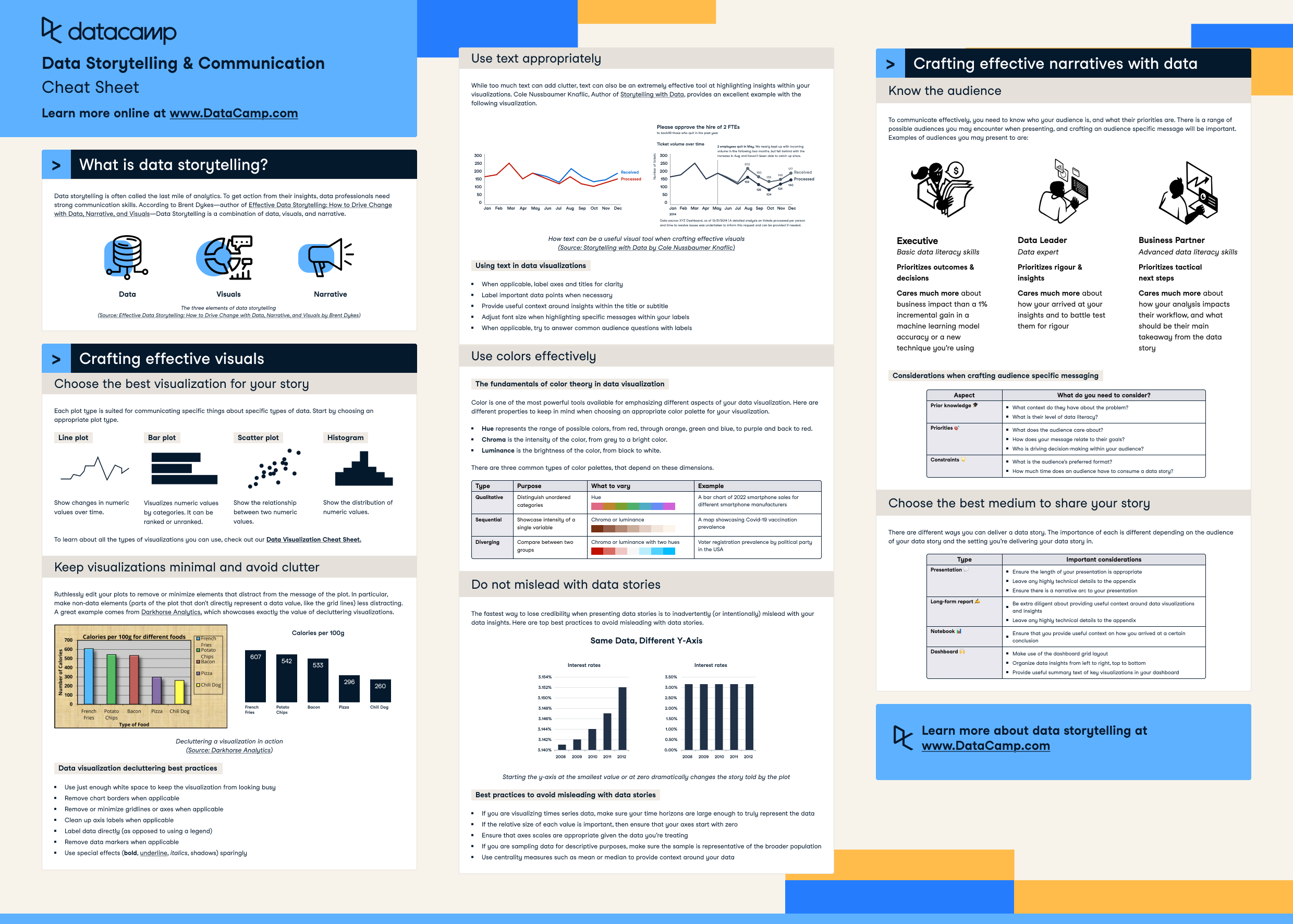Data Storytelling & Communication Cheat Sheet
In this data storytelling and communication cheat sheet, you'll learn about best practices for crafting data stories.
Sep 2022 · 6 min read
RelatedSee MoreSee More
blog
Telling Effective Data Stories with Data, Narrative, and Visuals
Effective data storytelling enables data practitioners to cross the last mile of analytics, enabling them to drive action with their insights. In a recent webinar, Brent Dykes discussed how data, narrative, and visuals can drive effective data stories.
DataCamp Team
5 min
blog
Seven Tricks for Better Data Storytelling: Part II
In a recent episode of DataFramed, Andy Cotgrave, technical evangelist at Tableau, shared the importance of data storytelling in driving change with analytics. In this two-part blog post, we deep dive into seven concrete tips that Andy provided on data storytelling
Travis Tang
4 min
blog
[Infographic] Dashboard Design Checklist
Dashboards are one of the most useful tools when communicating data stories. Here is a handy checklist to keep in mind when designing your next dashboard.
DataCamp Team
cheat sheet
Data Visualization Cheat Sheet
In this data visualization cheat sheet, you'll learn about the most common data visualizations to employ, when to use them, and their most common use-cases.
Richie Cotton
5 min
cheat sheet
Tableau Cheat Sheet
In this Tableau Cheat Sheet, you'll get the download on creating your first visualization, top visualizations in Tableau, creating dashboards, stories, and more.
Richie Cotton
8 min
cheat sheet
Data Science Cheat Sheet for Business Leaders
This cheat sheet guides you through the basics of how data science can help your business, including building your data science team and the common steps in the data science workflow.
Joyce Chiu
6 min
